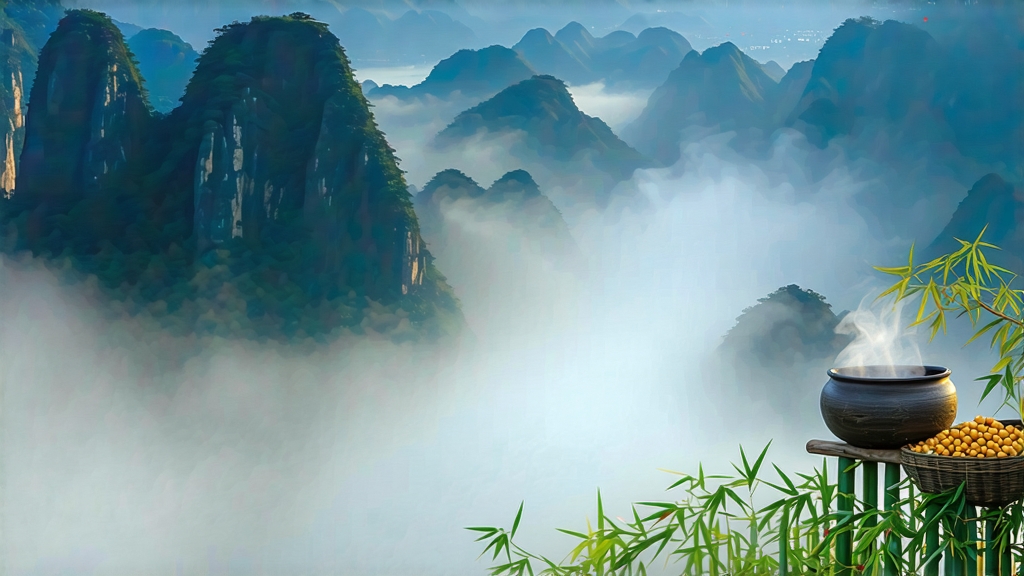
Tucked high in the western folds of the Dabie Mountains of Anhui province, a tea once reserved for emperors still follows a calendar that predates the steam engine. Huoshan Huangya—literally “yellow bud of Huoshan”—is the quietest celebrity of China’s six major tea families. While green teas chase spring headlines and dark pu-erhs fill investment portfolios, this yellow tea slips into a vanishing six-week harvest window, undergoes a secretive “sealing yellow” process, and then disappears again behind winter snows. To meet it is to step into a Ming-dynasty scroll where color, aroma and etiquette are measured against the mood of mountain mist.
Historical scrolls kept in the Huoshan county archive record the first tribute batch in 1588, when the Wanli Emperor pronounced the leaf “golden in liquor and jade in leaf.” For the next three centuries each new magistrate of Huoshan was evaluated less on tax revenue than on the successful delivery of exactly 2.25 kilograms of the bud-tip before the Grain Rain festival. Carried by relay runners down the Yuexi valley and north along the Grand Canal, the tea reached Beijing in seven days—still warm from the final charcoal bake. When the imperial system collapsed in 1911 the tribute lists were burned, and Huangya retreated into village memory. It was not until 1972 that a retired soldier named Wu Yusheng rediscovered 300 ancient mother trees inside the stone gate of Jinji Mountain, allowing the cultivar to re-enter commerce just as China reopened to the world.
Botanically the tea belongs to the small-leaf Camellia sinensis var. sinensis, but locals recognize three micro-cultivors: “Jinji early bud,” “Maqiao downy tip,” and the rare “Red-heart purple shoot.” Each must be picked when the standard is “one bud just unfolded, the second leaf still half-aspiring,” a moment that lasts roughly forty-eight hours in late March. A skilled picker can gather only 600 grams fresh weight in a dawn shift; 25,000 of these tips will shrink to one finished kilogram after the yellowing alchemy.
That alchemy is menhuang, the “sealing yellow” step that distinguishes the category. Within two hours of plucking the leaves are wok-fired at 140 °C for exactly 90 seconds, hot enough to kill grassiness yet brief enough to keep enzymes alive. They are then piled in bamboo trays only four centimeters deep, covered with wet linen, and left to breathe in a 28 °C, 75 % humidity room for 60 to 72 hours. During this nap the edges of each leaf oxidize microscopically, turning chlorophyll into pheophytin and releasing a hay-sweet compound Chinese chemists call “DMHF lactone.” The pile is turned every four hours so that every leaf spends time at the cooler, oxygen-rich surface; this gentle suffocation gives the tea its characteristic amber tinge without crossing into black-tea territory. A second low-temperature firing at 80 °C for forty minutes sets the color, followed by a final charcoal bake over young chestnut wood whose smoke is too faint to notice yet adds a whisper of praline.
The finished leaf is slim as a willow leaf, the color of old gold, and downy along the central vein. When judged at the national tea competition it must satisfy four metrics simultaneously: 8–12 % moisture, 3.2–3.8 % theaflavins, a yellow-to-green color index above 0.85, and an aroma score described by cuppers as “mountain orchid after rain.” Failure on any one metric bumps the lot down into the generic “Huoshan green,” a financial loss of roughly 40 %.
To brew Huoshan Huangya Western readers should abandon the teaspoon. The leaf is so tender that weight is the only reliable gauge: three grams for a 200 ml vessel, water at 85 °C, and a 30-second silent count for the first infusion. A gaiwan or tall glass allows the buds to stand upright like miniature bamboo shoots, a visual pleasure the Chinese call “the forest in the cup.” The second infusion, at 20 seconds, releases a liquor the color of chardonnay with a rim of jade green. By the third infusion lengthen to 35 seconds; after four steeps the leaf is spent, but chew a bud and